This post contains affiliate links and I will be compensated if you make a purchase after clicking on my links
Aristocats’ Essentials: Selecting the Best Nutrition for Persian Kittens
In the illustrious world of feline companions, Persian kittens hold a place of honor with their luxurious fur coats and regal demeanor. These royal furballs deserve nothing but the best when it comes to their dietary needs. Welcome to the definitive guide to the Best Cat Food for Persian Kittens.
Just like any cherished companion, the right nutrition is crucial for their growth, health, and happiness. This guide aims to unravel the nutritional mysteries to help you make an informed choice.
Persian Kitten Calorie Calculator

Suggested Feeding Frequency
- Kittens (up to 6 months): 3 meals a day
- Young cats (6 months to 1 year): 2 meals a day
- Adult cats (1 year and older): 1 or 2 meals a day
What are the nutritional needs of Persian kittens?
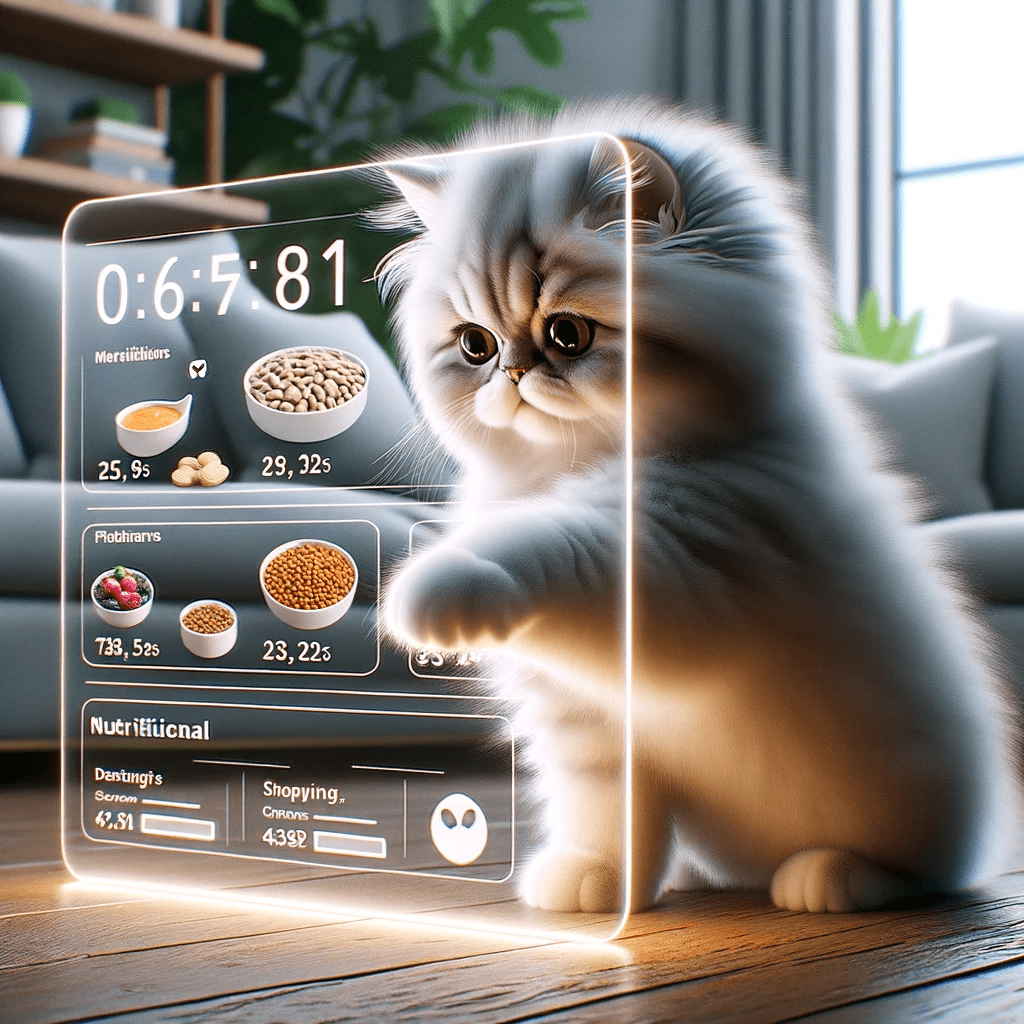
Alright, let’s paw dive into the digital dish of the Persian kitten diet.
🐾 High-Quality Protein
Just as a coder needs coffee, Persian kittens need a hefty dose of protein to keep their fur engine running smoothly. They are obligate carnivores, meaning meat isn’t just the main course, it’s the whole dining experience. Whole meats, fish, and organs are the equivalent of a perfect code with zero bugs for them. With up to 50% of their diet being protein, they are basically running on a meat-based operating system.
🐾 Essential Fatty Acids
Omega-3 and Omega-6 fatty acids are like the high-speed broadband for their fur's health and shine, ensuring a buffer-free streaming of glossiness and reducing the dreaded loading wheel of skin irritations and excessive shedding.
🐾 Limited Carbohydrates
Persian kittens aren’t fans of the carb cloud storage. Their system prefers a low-carb diet to prevent the bloatware of digestive issues and weight gain. When it comes to grains, think of them as the unwanted cookies that slow down the system - best kept to a minimum!
🐾 Vitamins and Minerals
Essential for supporting their metabolic processes, vitamins and minerals are like the latest software updates keeping their system in tip-top shape. Ensuring their food has essential vitamins like A, E, and C, along with calcium and phosphorus, is akin to keeping their anti-virus protection up to date.
🐾 Antioxidants
Persian kittens could use a good firewall to protect against oxidative damage and reduce inflammation. Antioxidants are their built-in malware protection, keeping them purring smoothly with fewer system crashes.
Essential Diet Tips for Persian Kittens
When it comes to feeding these regal fur babies, high-quality kitten food is the tech stack they need, supplemented with fresh water and perhaps a few well-chosen apps...err, snacks.
Persian kittens should run on this specially formulated kitten diet for a minimum of 4-5 months.
Now, given their flat muzzle and short jaw, Persian kittens might find dry kibble a bit challenging. A sprinkle of Laxolja oil can smooth it out, making for easier munching. And don’t forget to plug in some extra Omega-3 and Omega-6 fatty acids for that silky coat bandwidth.
If you notice your Persian kitten struggling with the kibble kernel, it might be time to switch to a well-balanced wet food diet.
Best Cat Food For Persian Kittens
We've meticulously curated a list of top-tier brands, ensuring a banquet of optimal nutrition for your feline companions.
Dry Food for Persian Kittens
1. Royal Canin Nutrition for Persian Kitten
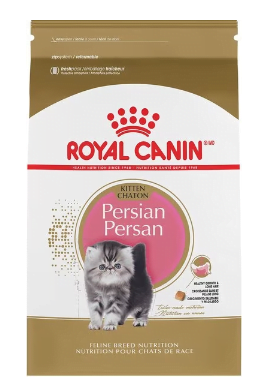
Royal Canin Breed-specific dry kitten fare is crafted for the nutritional quests of a growing purebred Persian, up till their 12-month milestone. It bolsters the young feline's immune defense with an exclusive antioxidant blend for optimal growth.
2. Purina ONE Natural Dry Cat Food
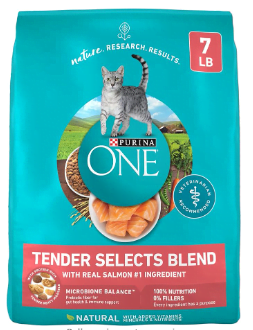
Purina Natural Kitten food carries a gentle entourage of natural probiotics and prebiotic fiber, standing guard over delicate digestive realms. With a comforting embrace of pumpkin and oatmeal, it's a tender touch on tiny tummies.
Wet Food For Persian Kittens
1. Purina Pro Plan Grain Free Wet Kitten Food Pate
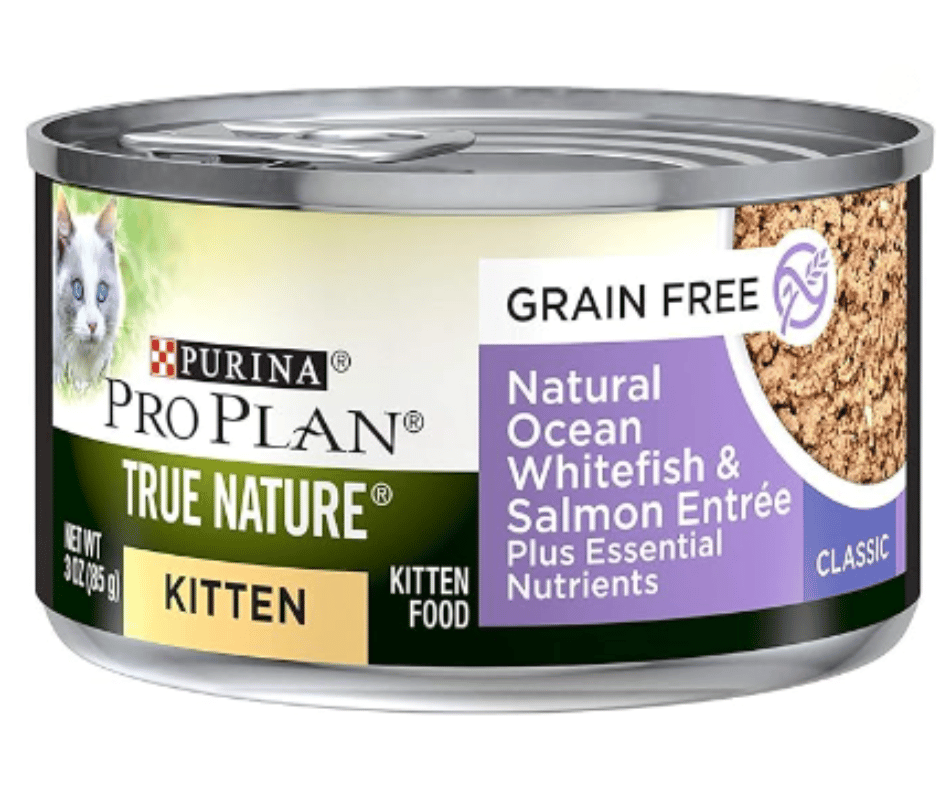
Purina Pro Plan's grain-free wet kitten food combines ocean whitefish and salmon for muscle development, with added DHA and antioxidants for brain, vision, and immune health, making it a balanced, preservative-free diet for kittens up to a year old.
2. Hill's Science Diet Kitten Wet Cat Food
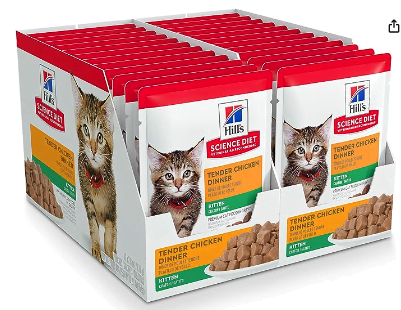
Hill Science Persian Kitten food is finely tuned to deliver just the right burst of energy, aiding your Persian kitten on its journey to achieving an ideal body weight. It's a trusted companion for bolstering immunity and fueling healthy growth, with a dash of DHA from fish oil to nurture a sharp mind and keen eyes. And let's not forget the balanced minerals, standing guard to fortify bones and teeth.
How often should I feed my Persian kitten?
Kittens require more food per pound of body weight to support their growth than adult cats. Understanding the nutritional shifts your kitten needs is key to supporting their health and growth.
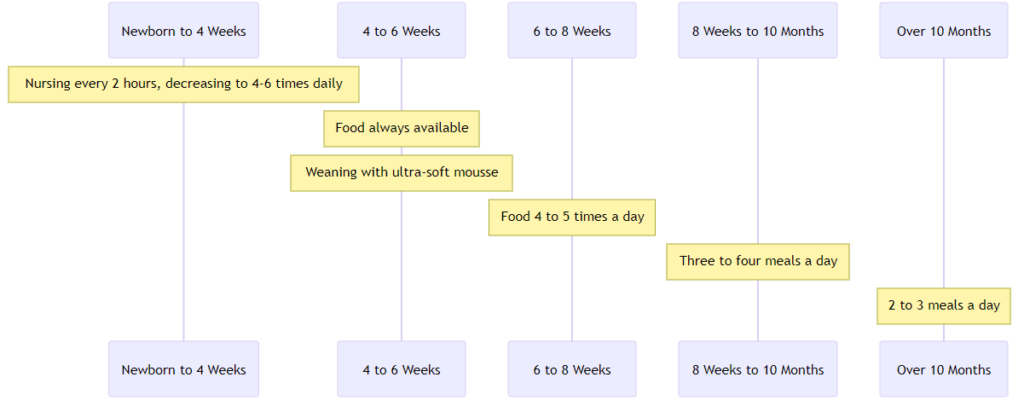
Step 1: Feeding Newborn Persian Kittens to 4 Weeks old
- Nursing Frequency: Every two hours for the first week, decreasing gradually to 4-6 times daily. Use specialized kitten formula.
- Growth Monitoring: Daily weight checks to ensure a gain of 15-20 grams per day.
Important: Steer clear of offering them milk from other mammals, as their tiny tummies lack the royal keys (read: enzymes).
Step 2: Feeding Persian Kittens 4 to 6 Weeks Old
- Food Schedule: Food should always be available
- Weaning Process: Begin introducing ultra-soft mousse or gruel several times a day.
- Solid Food Transition: By 5-6 weeks, as baby teeth emerge, kittens can start eating more solid textures without gruel.
Step 3: Feeding Persian Kittens 6 to 8 Weeks Old
- Food Schedule: 4 to 5 times a day
- Self-Feeding: Kittens should eat solid food on their own and start drinking water.
- Dry Food Introduction: Offer dry food, possibly moistened, to ease the dietary transition.
Step 4: Feeding Persian Kittens 8 Weeks to 10 Months Old
- Feeding Schedule: Three to four meals a day shall keep their vigor in check till the age of six months.
- Diet Adjustments: Monitor body condition to adjust food amounts, supporting rapid growth until about six months of age.
Step 5: Feeding Persian Kittens Over 10 Months Old
- Feeding Schedule: 2 to 3 meals a day.
- Switching to Adult Food: Transition to adult cat food around 10 months, adjusting based on your kitten's size, breed, and health under your vet's guidance.
Important: Once your kitten has transitioned to solid food, it's important to continue providing nutritious meals as they grow. Discover what to feed adult Persian cats.
Optimal Meal Portions for Persian Kittens
- Space Cadets (Under 6 Weeks Old):
- Fuel up with 2-22 ml of formula or cat milk daily. Keep the tank full for these tiny explorers.
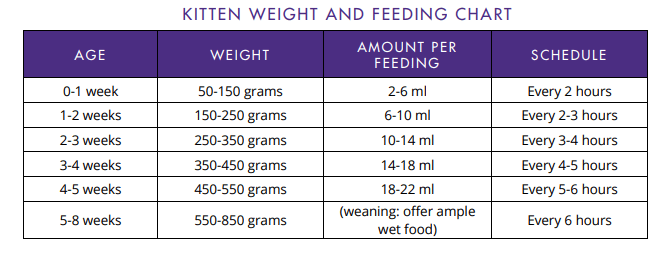
- Galaxy Explorers (6-8 Weeks Old):
- Mission supplies include 1/3 to 1/2 cup of wet food per day. Just enough to keep those rocket boosters going!
- Cosmic Kittens (8 Weeks to 5 Months Old):
- Upgrade the cargo to 1/2 to a full cup of wet, dry, or a combination of both of food daily. They’re ready for longer missions and more thrilling adventures!
Can I mix wet and dry food for my Persian kitten?
This blend introduces a variety of textures and flavors, keeping the mealtime exciting and far from mundane.
Imagine, every meal a new experience, keeping your kitten's appetite engaged and curious. This isn't just about tantalizing their taste buds; it's also a wise nod to their health. Wet food brings a satisfying richness to the table, keeping your kitten content for longer. Yet, the cost could stretch your wallet. Here's where dry food steps in, extending the banquet without shrinking your budget.
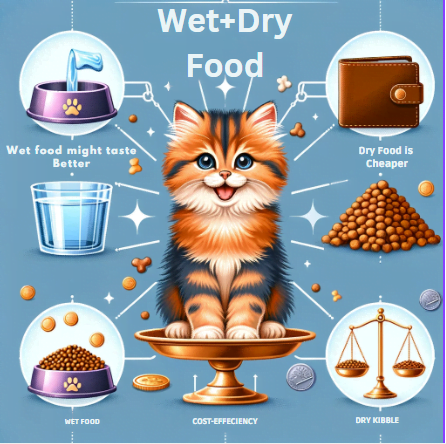
As you venture into this mixed diet terrain, observe your kitten's reaction. Some may lean towards the crunch of dry kibble, while others might prefer the tender touch of wet food. And there will be those who'd enjoy a harmonious blend of both. Adjusting the mix to suit your kitten's preference is your ticket to a happy, purring Persian.
And let's not forget about hydration. When dry food is in play, making sure your kitten has access to fresh water is crucial to keep them hydrated and healthy. Check out our article on ensuring proper hydration for your Persian kitten.
Are there specific ingredients to avoid in cat food for Persians?
When it comes to the aristocratic palate of Persian cats, not just any banquet will do!
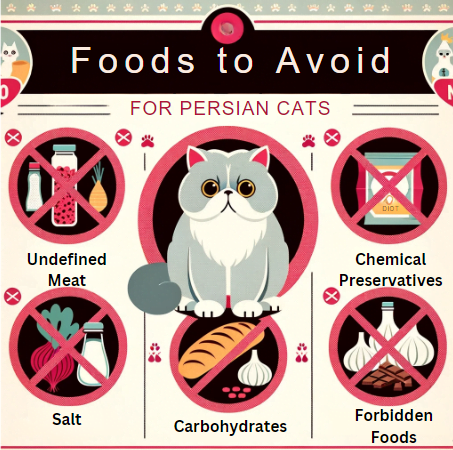
Here’s a breakdown of the culinary culprits you should steer clear from to keep your Persian purring with gusto:
1. 🍖 Undefined Meat
If the label on the cat food tin seems to be playing hide and seek with the actual source of the meat, it's a red flag. Terms like “animal derivatives,” “meat and bone meal,” “chicken meal,” and “fish meal” are the knights of the notorious, heralding a realm of animal by-products that wouldn't grace a human table.
2. 🧂 Salt
A pinch of salt may be a recipe for disaster for your Persian companion, as it could march them down the road of hypertension and kidney damage.
3. 🍞 Carbohydrates
The carb kingdom is not one your Persian needs to venture into. Their royal bodies don't produce the enzymes necessary to break down and utilize carbs, making them an unwelcome guest at the feast.
4. 🚫 The Forbidden Foods
Onions, garlic, dairy, raw meat, eggs, chocolate, and alcohol are akin to dragons in the tale of your Persian’s dietary adventure. They hold a chalice of poison for your feline friend, and are to be banished from the kingdom of their bowl.
5. 🧪 Chemical Preservatives, Meat Byproducts, and Carbohydrate Fillers
These are the jesters that have no place in the royal court of Persian dietary needs, often found lurking in cheaper foods, mocking the regal nutrition your Persian deserves.
Before pledging allegiance to a brand of cat food, embark on the quest of label reading. Ensure that the chosen food honors the high protein, low carb, and essential fats decree that shall keep your Persian in the pinnacle of purr-fection.
What are the common health issues in Persian kittens related to diet?
Among the various acts, a few health issues take center stage, casting a spotlight on the importance of a well-tuned dietary orchestra.
1. 🥀 Food Allergies
A melody of poor-quality food resonating through the days could strike the wrong chord, leading to the discord of food allergies. The villain in this act often wears the disguise of subpar kibble, plotting against the harmonious tune of your kitten's health.
2. 🎭 Obesity
The act of obesity is a dramatic one, where the scales tip towards the ominous. Persian kittens, with their regal demeanor, may find themselves amidst the clutches of obesity, a known harbinger of the dark shadow of diabetes. The script to prevent this act lies in a narrative of healthy food and a well-kept check on their weight, ensuring the tale doesn't meander into the ominous woods of obesity.
3. 🍬 Diabetes
The echoes of diabetes could reverberate through the Persian kingdom with signs like a river of thirst, a waterfall of urination, and a paradox of weight loss despite a banquet of appetite. This act is a stark reminder of the crucial role the dietary script plays in the grand scheme of their health narrative.
A myriad of other health sagas unfold in the lives of Persian kittens. The tales of Polycystic Kidney Disease (PKD), Persian common eye problems such as Epiphora and corneal ulcers, the drama of hip dysplasia, the breathless narrative of Brachycephalic Airway Syndrome, skin sagas of ringworm and flea allergies, and the heartrending tale of Hypertrophic Cardiomyopathy.
Top-Recommended Treats for Persian Kittens
Indulging your Persian kitten with a treat is more than a moment of pampering; it's about sprinkling their diet with nutritional gems that keep them purring for more. However, not all treats are crafted equal.
Here's a curation of treats that are not only cherished by the Persian community but are also stamped with a seal of nutritional approval:
- Lysine Treats: Lysine treats are laced with L-Lysine, an essential amino acid, which acts as a shield against upper respiratory infections while bolstering the immune system—a true knight in shining armor in the realm of treats.
- Freeze-Dried Fantasia: Freeze-dried treats stand at the altar as they have high-quality ingredients and are easy to chew.
- Soft Pate Pleasures: If your Persian kitten finds the act of chewing a bit of a joust, soft pate treats come to the rescue.
Some of the Best Treats for Persian Cats
Greenies Smart bites

Crafted for the curious journey of kittens up to a year old, these treats are the allies in bolstering your kitten's immune fortress, with a dash of DHA to fuel their brain and vision quest.
Temptations Soft Kitten Treats

Crafted for the curious journey of kittens up to a year old, these treats are the allies in bolstering your kitten's immune fortress, with a dash of DHA to fuel their brain and vision quest.
Remember, while treats are a source of joy and nutrition, they should only grace a small part of your kitten's dietary kingdom. A sudden influx of new treats can be more of an invasion than a celebration in your kitten's tender tummy.
How can I switch my Persian kitten's diet safely?

The narrative of a smooth diet transition is scripted over a span of seven to ten days, a time frame that allows your kitten's system to acclimate to the new culinary landscape.
- Day 1-2: Start with 25% new diet and 75% old diet. Introduce the new food gently to ease your kitten's taste buds and stomach into the change.
- Day 3-4: Shift to a 50-50 mix of new and old diets, reaching a balance that marks the midpoint of your kitten's dietary transition.
- Day 5-6: Increase to 75% new diet, decreasing the old diet to 25%. This step encourages your kitten to get familiar with the new flavors and nutrients.
- Day 7-10: Transition completely to 100% new diet, opening a new chapter in your Persian kitten's nutrition.
Through this epic of dietary transition, your vigilant eyes should play the narrator, chronicling your kitten's behavior and appetite. Any signs of a reluctant appetite or a displeased tummy, a retreat to the old diet with a slower pace of transition would be the wise next script.
Can I feed homemade food to my Persian kitten?
As the dawn of weaning beckons around the tender age of 6 to 8 weeks, the transition from milk bottles to the earnest world of solid food unfolds. This epoch is where the staple of water and dry meals should graciously waltz into your kitten’s diet.
A creative culinary spin could be to concoct a blend of water and meat-flavored human baby food, turning the mealtime into a kitten’s joyous jamboree.
As the days roll into months, marking the age of 3 to 10 months, the dining tale of your Persian kitten becomes a tad more opulent. The menu can be a splendid array of chicken, rice, and ground beef, with a colorful entourage of vegetables such as carrots, zucchini, cauliflower, and pumpkin making a grand entry.
The artistry in this homemade culinary adventure lies in orchestrating a balanced act. Each meal should pirouette gracefully across the nutrient spectrum, ensuring a harmonious blend of essential nourishments.
DIY Nutritious Meals for Persian Kittens
Delving into homemade meals for your Persian kitten allows you to control the ingredients ensuring they are wholesome and nutritious.
Here’s a handful of simple recipes to get you started:
- Simplified Chicken Dish
- A lean meat option, chicken is a great choice for your kitten. Just boil or cook the chicken, ensuring to remove the skin, and once cooled, it's ready to be served.
- Fish Fare
- Salmon or tilapia are excellent fish choices for their low mercury content. Boil the fish for about 10-15 minutes, ensure all bones are removed, and allow it to cool before serving to your kitten.
- Basic Rice
- Cooked rice without any seasoning can be a gentle food option, especially if your kitten has a sensitive stomach.
- Vegetable Variety
- Neutral vegetables like carrots, zucchini, cauliflower, and pumpkin can be boiled or cooked and added to your kitten's diet for a little variety.
- Beef Bowl
- Ground beef, boiled for 10-15 minutes, can serve as another protein-rich option for your kitten once it's cooled down.
Conclusion: Mastering Persian Kitten Diet Essentials
The Ultimate Guide to Cat Food for Persian Kittens is your compass to navigating through the tender phases of your Persian kitten growth, ensuring each purr resonates with health and contentment. As you leaf through this guide, unveil the dietary orchestration that fuels their playful twirls and keeps their majestic fur shimmering with vitality.
Your Persian kitten's journey to becoming a dignified cat begins with the right nibble; let's ensure each bite is a step towards a thriving, regal life.

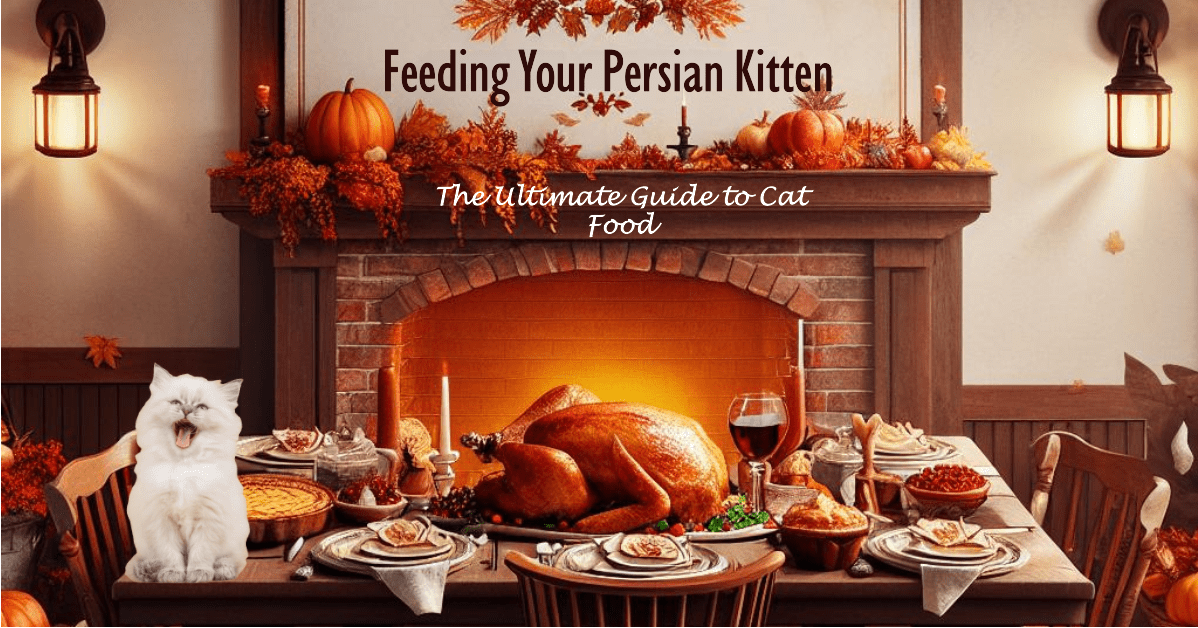
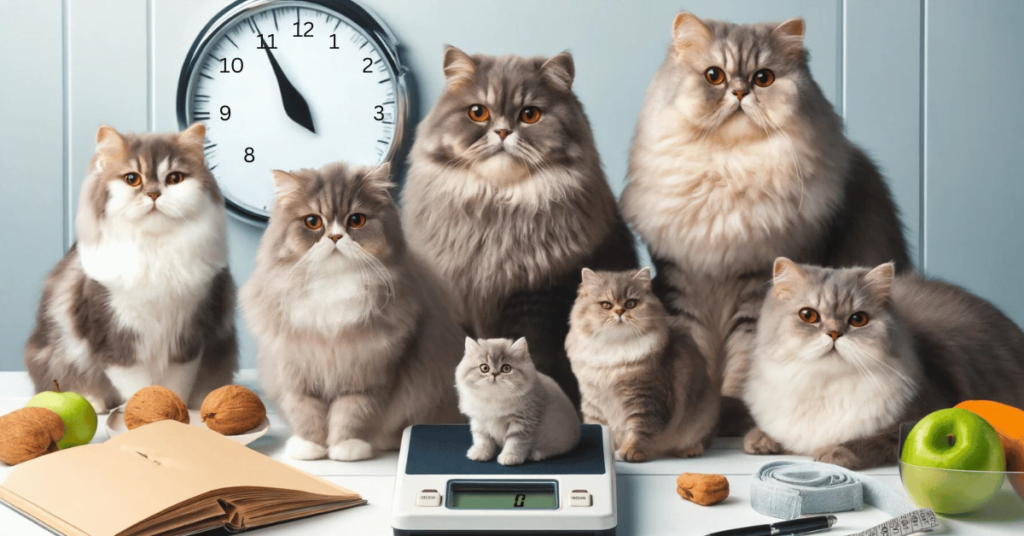
Leave a Reply